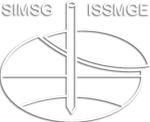Characterization of input and output streams at material recovery facilities of São Paulo city for thermal treatments applications
Characterization of input and output streams at material recovery facilities of São Paulo city for thermal treatments applications
In São Paulo city, the large volume of waste generated and the scarcity of areas for new landfills are two factors for the study of the implementation of new treatment technologies. The present study aims to evaluate the technical feasibility of the incineration of municipal solid waste (MSW) from the door-to-door selective collection from São Paulo city and its rejects. The methodology involved sampling at the input and output of the Loga and Ecourbis Material Recovery Facilities (MRFs) and laboratory tests to determine moisture content, organic matter, ash content and volatile material content to estimate the thermogravimetric curves. Input samples of the MRF-Ecourbis and MRF-Loga showed an average total mass reduction equal to 54.7 % and 58.8 %, respectively, with emphasis between 200 °C and 375 °C. These weight losses reflect materials such as Tetra Pak, textiles, rejects, papers and plastics. Output samples from MRF-Ecourbis presented a 52.5% reduction compared to 69.5% from MRF-Loga, and both had higher mass loss between 200 °C and 275 °C, characteristic of rejects, papers and plastics. Using secondary data, it was possible to estimate the lower calorific value (LCV) of the samples analysed, which was revealed to be higher than that necessary for the technical feasibility of incineration. Considering the composition of the samples and the amount of degradation, incineration is seen as a good alternative for the integrated treatment of MSW, as well as encouraging the energy use of refuse-derived fuel (RDF) from the local MSW.
Keywords: Municipal Solid Waste; Selective Collection; Thermal treatment; Incineration.
L. Paiva; G. Mondelli
9th International Congress on Environmental Geotechnics (ICEG2023)
Characterisation, Remediation and Management of Contaminated Sites and Wastes
https://doi.org/10.53243/ICEG2023-150
